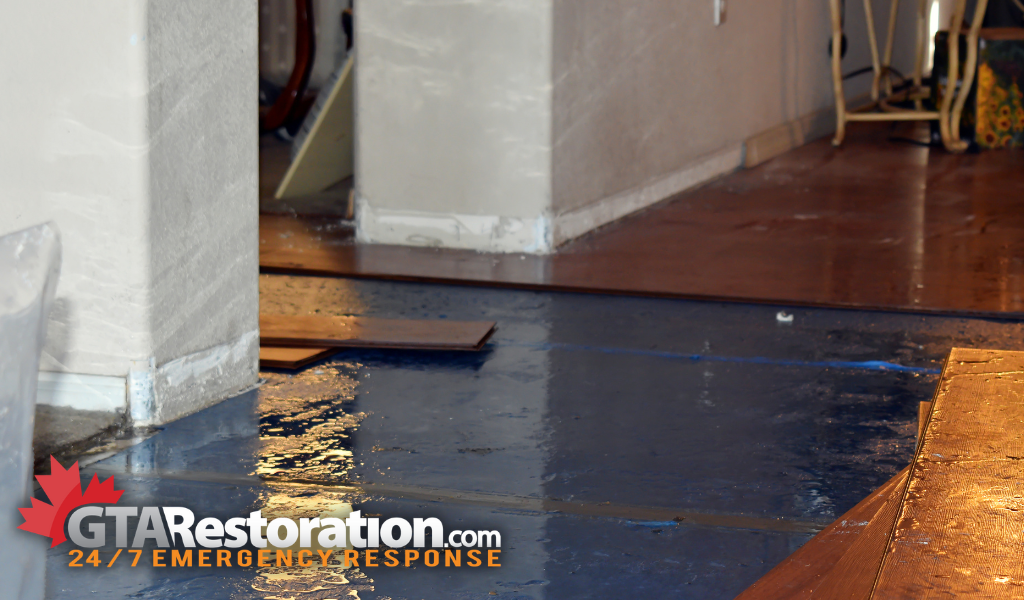Water damage in properties can range from minor inconveniences to severe health hazards requiring immediate professional intervention. Understanding the different types of water damage is crucial for property owners, as it helps determine the appropriate response and necessary safety measures. This comprehensive guide explores the three main categories of water damage and their implications for property owners and occupants.
Different Types of Water Damage
There are three types of water damage. Clean water is safe at first and comes from things like leaks or rain. Grey water is a bit dirty and can make you sick. Black water is very dangerous and comes from sewage or floods. The worse the water, the more serious the cleanup.

Category 1 Water Damage (Clean Water)
While still requiring prompt attention, clean water damage represents the least hazardous form of water intrusion. This category involves water from sanitary sources that poses no immediate health risk to occupants. Most commonly, Category 1 water damage occurs from broken water supply lines, overflowing sinks with clean water.
It may happen due to rainwater leaking through a roof. When dealing with clean water damage, property owners often have more flexibility in addressing the situation, as many aspects of the cleanup can be handled without extensive protective equipment.

However, it’s crucial to understand that even clean water situations require swift action. If left untreated for more than 48 hours, Category 1 water damage can deteriorate to Category 2, as standing water becomes a breeding ground for microorganisms.
Initial response to clean water damage should include thorough documentation, immediate water extraction, and proper drying of affected areas. Regular maintenance of plumbing systems, prompt repair of any leaks, and proper roof maintenance can help prevent many Category 1 incidents from occurring.
Category 2 Water Damage (Grey Water)
Grey water damage presents more significant challenges and health concerns than clean water incidents. This category includes water containing chemical, biological, or physical contaminants that can cause discomfort or sickness if ingested or exposed to skin.
Common sources of grey water damage include discharge from washing machines, dishwashers, or overflowing toilet bowls containing urine but no feces. The presence of these contaminants necessitates a more careful approach to cleanup and remediation.
Professional intervention becomes increasingly important with Category 2 damage, as proper sanitization is crucial to prevent long-term health issues. The cleanup process requires specific cleaning agents and proper protective equipment to ensure safe handling.
Time sensitivity is particularly critical with grey water damage, as it can rapidly deteriorate to Category 3 if left untreated. Property owners should focus on prevention through regular maintenance of appliances, proper disposal practices, and vigilant monitoring of water-using fixtures throughout their property.
Category 3 Water Damage (Black Water)
Black water damage represents the most severe and hazardous category of water damage, requiring immediate professional intervention. This classification includes water contaminated with sewage, chemical waste, or natural disasters like floods.
Black water contains pathogenic agents, toxic materials, and other harmful substances that pose serious health risks to occupants. Sewage backups, flood waters from rivers or streams, and toilet backflows containing fecal matter are common sources of Category 3 water damage.
Professional remediation is absolutely essential for Category 3 water damage, and property owners should never attempt to handle black water cleanup themselves. The restoration process requires specialized equipment, protective gear, and extensive sanitization protocols.
Exposure to black water can lead to severe illness or injury, making professional intervention non-negotiable. Prevention of Category 3 water damage often involves installation of backflow preventers, regular sewer line maintenance, and proper landscape grading to direct water away from the property.
Progressive Deterioration and Long-term Implications
Water damage categories can progress rapidly if not addressed properly. The deterioration from clean to grey water typically occurs within 48 hours, while grey water can further degrade to black water if left untreated.
This progression happens due to growing bacterial populations in standing water, interaction with building materials and contaminants, and environmental factors such as temperature and humidity. Understanding this progression helps emphasize the importance of immediate response to any water damage situation.
Professional Restoration Considerations for Types of Water Damage
Professional restoration services become increasingly important as the category of water damage escalates. These experts possess the knowledge, equipment, and certifications necessary to accurately assess the category of water damage and implement appropriate safety protocols.
They ensure proper drying and sanitization of affected areas while preventing secondary damage like mold growth. Their expertise extends to restoring the property to safe, habitable conditions and documenting the process for insurance purposes.

Emergency Response Protocol
When water damage occurs, quick response can mean the difference between a manageable situation and a severe crisis. For Category 1 incidents, property owners should document the damage, remove valuable items, and begin drying processes if safe to do so.
Category 2 situations require evacuation of the affected area, avoiding direct contact with the water, and contacting water damage professionals. In Category 3 cases, immediate evacuation is necessary, followed by contacting emergency restoration services while avoiding all contact with contaminated water.
Insurance and Documentation
Property owners should maintain detailed records of any water damage incident, regardless of category. This documentation should include photographs, written descriptions of the damage, and any relevant maintenance or repair records. Many insurance policies have specific requirements for water damage claims, and understanding these requirements beforehand can help ensure proper coverage and reimbursement.
Understanding the different types of water damage helps property owners make informed decisions about response and restoration. While Category 1 damage might allow for some DIY intervention, Categories 2 and 3 require professional expertise to ensure safe and effective remediation.
Remember that quick response times are crucial in preventing damage escalation and protecting both property and health. Regular maintenance, proper prevention measures, and immediate response to water incidents can help minimize the impact of water damage on your property and its occupants.
Tags: GTA Restoration Articles










